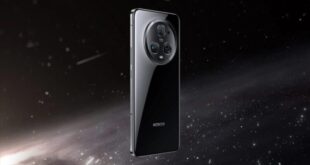Maintaining a well-lit dock is a simple method to avoid accidents and make the area safer, whether you use it for boating or just to relax and enjoy the sunset.
Installing the best solar dock lights might be something you’re interested in if you want to lessen your environmental impact. Before making a transition, you may also be curious about how solar lights compare to conventional electrical lights in terms of performance.
Discover the benefits and drawbacks of solar lighting in the following paragraphs to help you determine if this green option is the best fit for your dock.
How Solar Dock Lights Work
Each lamp has a solar panel that captures solar energy during the day. A little battery is used to store this energy. The battery’s electricity is utilized to turn on the LED lights when the panel can no longer detect light. Until the battery runs out of power or the sun returns to renew it, the lights remain on. Everything carried out automatically.
The idea that solar lights only function on sunny days is among the most widespread misconceptions about them. Even while they can’t recharge on overcast or wet days, it doesn’t imply they won’t function at all.
Large batteries enable lights to operate for several days without requiring recharging. Therefore, it is worthwhile to spend money on lights with high-capacity, high-quality batteries if you are concerned that overcast days may keep your dock lights dark.
Pros of Solar-Powered Lighting
Easy to Install
Sadly, many environmentally beneficial measures are viewed as a bother. For instance, recycling and composting take more work than just putting trash in the trash. Nevertheless, installing solar-powered dock lighting is simpler than installing electrical illumination.
Solar light installation on your dock, deck, or external steps is frequently as easy as deciding where to put your light fixtures and bolting them in place because there is no wiring required.
They may installed anywhere as there is no need for wiring. You can achieve it without having to engage the services of a professional installation crew, whether that be on top of your dock, on the sides, or on top of the piling.
Save Money
Solar-powered dock lights won’t add any expense to your energy bill because they fueled by the sun. Solar lighting may initially cost more than conventional electric lighting, but over time, the energy savings, lack of installation fees, and reduced maintenance fees soon offset this.
Lower Maintenance
Solar dock maintenance is simple because there are no wires to be concerned about. After installation, there are only two maintenance jobs that need to done: regularly changing the batteries and keeping the lights clean.
Regular cleaning required to get rid of debris that accumulates on the lights’ surface and reduces their capacity to collect solar energy. Due to their vulnerability to severe weather, dock lights are particularly susceptible to this. Batteries can last up to two years, depending on the product. To maintain your solar dock lights as bright as possible, you might wish to change them earlier.
Possible Tax Incentives
By converting to eco-friendly electricity for your dock or marina, you might be able to qualify for certain subsidies and tax benefits, depending on where you reside. Enter your zip code into the Database of State Incentives for Renewables & Efficiency to find out what incentives could be available to you.
Cons of Solar-Powered Lighting
Not Always as Bright
Many people think that low-voltage electrical lights are brighter than solar lights, which aren’t. They might have been correct a few years ago, but emerging technology is beginning to change that. Every year, solar lights improve and become more brilliant. Give them another try if you weren’t happy with their performance in the past; you could pleasantly surprised!
Most Turn Off Automatically
Solar-powered dock lights might not be for you if you want to be able to manage when they turn on and off. This is due to the fact that most operate automatically, charging during the day and only turning on when it becomes dark outside.
A lot of modern outdoor solar lights include motion sensors that enable them to only come on when they sense movement because the auto on/off operation has the potential to waste energy.
Just bear in mind that using your dock for boating may prevent you from seeing motion-activated lights from a great distance, which can make it challenging to dock your boat at night.
Some Have a Blue Tint
While it’s clear that not everyone will find this to be a drawback, solar dock lights sometimes have a blue hue, which you might not enjoy. Pay particular attention to the light’s CCT if having softer, whiter lights on your dock are vital to you for aesthetic reasons (Correlated Color Temperature).
K is the unit of measurement for CCT. Warmer light produced when the temperature is lower. A candle’s yellow glow has a CCT of around 1,900K, whereas one with a CCT of 5,000K or greater will emit blue-tinted light. So seek for lights with a lower CCT if you want something a little softer.
Summary
You might already have some ideas for how you want to light up your maritime area now that you are aware of the advantages and disadvantages of solar dock lights. People may go through a selection of appealing outdoor lighting alternatives for more ideas.
You can think about improving your dock with vibrant underwater lights in addition to solar lighting. They may used to draw fish in addition to creating a bright light beneath your boat or jet ski lift.
 HammBurg Be informed with latest news, reviews, entertainment, lifestyle tips, and much more.
HammBurg Be informed with latest news, reviews, entertainment, lifestyle tips, and much more.




